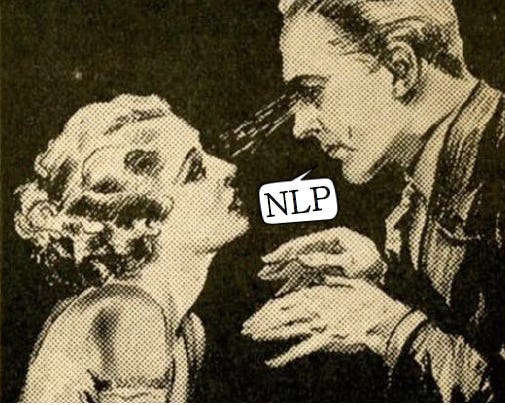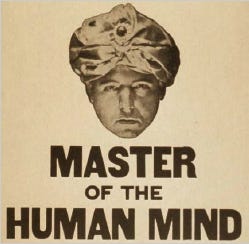(This article originally appeared in the October 2020 issue of The Observer)
There are subtle differences between propaganda, subliminal messaging, and neuro-linguistic programming (NLP), yet all three share a similar goal — to influence a person’s behavior. The manipulation of language is an extremely powerful tool, and NLP techniques offer various ways to structure words and speech in order to ensure the listener receives the intended message. Using indirect suggestion and verbal gymnastics (repetition, specific key-word usage and phrasing) NLP is designed to affect the unconscious mind, and ultimately, an individual’s thoughts and actions.
Neuro-linguistic programming was initially developed by two California psychologists in the 1970s as a psychotherapy tool. The practice was further refined by the famous clinical hypnotherapist Milton Erickson, a pioneer in the field of deep trance hypnosis. Many of his techniques are codified in the Milton-Model, which describes ways to use language to induce a “trance-like" state in an audience. This “softening” makes an individual more susceptible to implanted suggestions.
Let’s use politics as an example to examine a few of the various tactics employed during NLP. During the course of a political speech or media segment you might hear a politician or talking news-head claim things like:
“The top scientists agree with me…”, or
“It’s a fact that…”.
Who are all of these top scientists? How do we know what was said is a fact? The speaker does not disclose this information, purposely remaining vague while giving authority to whatever they say next. The method, known as “lost performative,” is extremely common and can dramatically impact how a person perceives the information delivered.
Another concept often demonstrated in Milton’s brand of NLP is the inclusion of an affirmative, rhetorical question at the end of a statement. This helps the speaker frame their message in a manner that makes it hard for the listener to disagree.
For example, a politician may say:
“Making sure people have access to healthcare is important, isn’t it?” or
“You know I’m the only candidate that cares, don’t you?”
This ploy is referred to as a “tag question,” and it serves to create agreement and positively reinforce the preceding statement within the receiver’s unconscious mind.
An additional Ericksonian NLP trick dispersed in speech involves “embedded commands,” wherein the speaker includes cleverly obfuscated command phrases within a seemingly benign statement. Note the hidden directives nestled within the following sentences:
“When you stop and think about my proposals, they start to add up. I hope everyone here will vote for me, and feel good about participating in the democratic process.”
When combined with the proper vocal intonation, these subconscious suggestions can be skillfully woven into speech without an audience being consciously aware of them.
Like every good attempt at mind control, NLP seeks to create dissonance between what the conscious mind hears and the unconscious mind interprets. This requires a deft application of doublespeak and deceptive phrasing. Milton Erickson commented on the nature of his unique set of practices by confessing: “In all my techniques, almost all, there is a confusion.” Leveraging an approach known as, “I’m not going to tell you,” someone running for public office might say:
“I’m not going to tell you I’m the best candidate,” or,
“I won’t say my competitor is a fraud.”
By placing this qualifier at the beginning of a statement, the speaker is absolved of any biased remarks despite effectively reinforcing their underlying assertions. A more advanced version of this technique involves an added layer of craftiness. Suppose a politician is asked a tough question that they don’t want to answer directly. They might say something like:
“Let me tell you why I won’t answer that question,” and then proceed to supply statements that effectively reveal an answer.
This trick provides a nice bit of linguistic cover for the speaker and creates plausible denial should they need to backtrack or change their position on a given topic.
Most mainstream scientists don’t believe in the efficacy of NLP, labeling it a “pseudoscience,” or a “New-Age psycho-religion.” One anthropologist declared that the methodology “attempts to wed the magic of folk practice to the science of professional medicine.” Yet despite experts’ negative opinions of neuro-linguistic programming, evidence of it’s usage is widespread. When done correctly, some techniques can help a speaker aptly weave the appropriate words and phrases into their language to achieve a desired effect on a listener.
No matter which candidate or political party is bloviating in front of the camera, it’s wise to keep your ears open for a barrage of persuasive NLP tactics.









